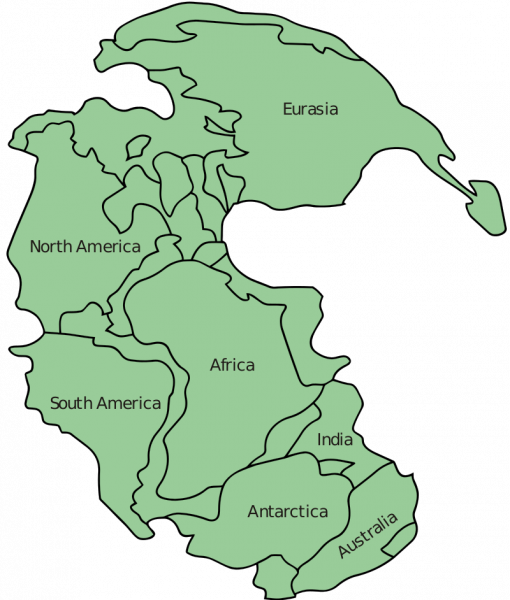The lost 8th Continent is Hidden Nearly 1,000 Miles Under Europe
About 225 million years ago, the way the globe was arranged looked very different than it does now, according to Geology.com. The dry land was composed of one supercontinent, known as Pangaea. It was an enormous landmass that looked a little like Pac-man.
Over the course of the next 25 million years, Pangaea separated into two smaller, but still very substantial, bodies. Those bodies continued to fracture and drift apart over the course of hundreds of millions of years, until the Earth looks the way it does today.
That’s the general theory, anyway. There are a few exceptions.
One of those exceptions is the ‘missing’ continent of Greater Adria, a landmass about the size of Greenland. You might wonder how, in this technological age, an entire continent managed to be overlooked. The answer to that question is that it seems to have been slowly pushed under Southern Europe as other, larger continents were shifting their positions, according to the work by Prof. dr. Douwe van Hinsbergen.

Greater Adria and Europe bumped into each other as they were shifting. Since Greater Adria was already half-submerged, what’s now Europe essentially rolled over it, scraping off its top layer in the process. The top layer became mountains located in some 30 European countries, and the rest of it was buried under Greece, Italy, and the Baltics.
The event is best explained using the theory of plate tectonics, which simply says that the Earth’s outer layer is made up of a series of plates, which are made up of a lot of crust over a much smaller layer called the mantle. The plates aren’t firmly tied to the mantle, and move around a tiny bit every year because of currents caused by heat from the planet’s core rising up through the mantle.
It’s a little bit like the way you can slide your carry-on bag over the rollers of the scanning machines at the airport. The bag won’t move by itself, but outside force can make them sort of slide along.
Greater Adria isn’t the only ‘missing’ continent, either. There’s a body of research that suggests that not only has it happened to other landmasses, but that most of the earth’s earliest continents may have also disappeared, according to NBC news. That research involved the analysis of ancient rocks, which showed traces of those lost lands. Their disappearance may very well also mean that the earliest evidence of how life emerged on the planet was lost along with them.

On the other hand, it’s hard to erase something completely. Even though much of Greater Adria is buried in the Earth’s mantle, some of the continent survived on the planet’s surface. Parts of it are in Croatia and Southern Italy, other parts became part of the Alps. Limestone still underground was exposed to huge amounts of heat and pressure, eventually turning into the marble that was mined and used for temples and other constructions in that part of the ancient world.
There’s another known ‘missing’ continent, as well. It’s called Zealandia, and it’s under the waters that surround New Zealand. Geologists say it sank because it stretched and thinned as it moved, decreasing its elevation, then it was affected by volcanic activity in the Pacific region. Those two things together caused it to sink until 94% of its mass is underwater. The only parts of it that remain dry land are New Caledonia and New Zealand.
Early in our planet’s life, the continents weren’t necessarily stable or strong. Scientist say that when the planet was formed, it contained a lot more radioactive elements than it does now. A certain amount of those radioactive elements collected in the rocks of those early continents, causing them to erode over time. The remaining bits of those early landmasses still have their uses, though.
Another Article From Us: Thawing Permafrost Could See Anthrax & Prehistoric Diseases Return
Being able to figure out what the Earth used to like and where the last bits of those early continents are located may help geologists not only learn more about how current deposits of ore and minerals were formed, but also lead to being able to predict where other, older deposits might be located.





